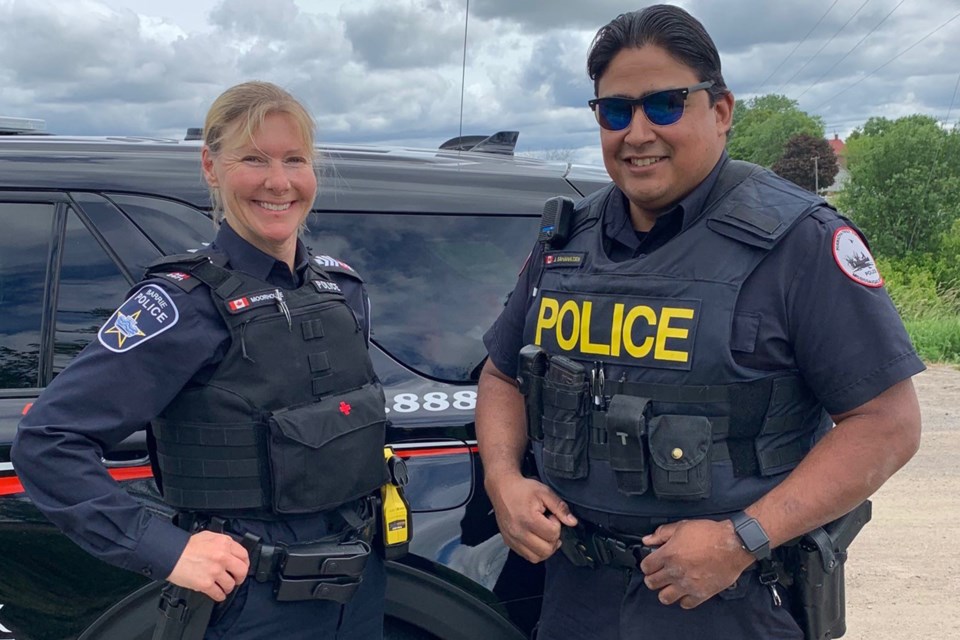Whether it’s in an alley near the Five Points in downtown Barrie or on a First Nation reserve, the key components of good policing are similar, says a local staff sergeant.
Barrie police Staff Sgt. Linda Moorhouse recently had the opportunity to see those components come together during a visit to Curve Lake First Nation Reserve, which is located about 30 minutes north of Peterborough.
Moorhouse tweeted about last month's one-day immersion in reserve life — along with members of the Anishinabek Police Services — which had both different and similar situations to policing in Barrie.
“Police officers encounter the same problems, wherever they are,” she tells BarrieToday. “Domestics, drugs, alcohol and assaults happen there, just as they happen here.
"But there are different issues and culturally sensitive undertones within Indigenous communities and the officers work hard to build relationships with community members," Moorhouse says. “Trust is a huge component to effective reserve policing. Communication and good listening skills are also key.”
Moorhouse says as a police officer, the more knowledge she has of the people living in the community, the better equipped she will be to assist them.
“At least that is the hope,” she says. “Nationally, Indigenous issues have been so topical and I wanted to get some local perspective. Curve Lake First Nation is one of the closer detachments with their own police force, so that is why I went there.”
The 27-year Barrie police veteran, who sits on the Ontario Association of Chiefs of Police (OACP) equity, diversity and inclusion committee as well as the Barrie police EDI committee, says Anishinabek officers are stretched to the limit.
“One of the issues that really struck me was the lack of funding for Curve Lake policing,” Moorhouse says. “Although they have a relatively small area to police, they are continually short-staffed. There really are no days off for the few officers that work there, unless they are on annual leave.”
That leaves Anishinabek officers sometimes relying on neighbouring police organizations for backup.
“That can be stressful and potentially dangerous, depending on the situation,” she says. “The reserve population increases significantly in the summer because of all the cottages there, but the number of officers doesn’t increase. Additional training and courses are difficult to get when staff is so limited.”
Moorhouse says when another member of the association of chiefs of police EDI committee, Anishinabek Police Services Acting Chief Marc Lesage, broached an idea for sharing policing skills, she was on board.
“He made a standing offer to anyone who wanted to spend a day at a First Nations detachment and I took him up on it,” she says. “I welcome the opportunity to increase my understanding and awareness of different cultures. I would encourage other (police) members to take this opportunity and hope that someday we can all benefit from Indigenous awareness training.
“This experience has reminded me that we can’t make assumptions about people,” Moorhouse says. “We don’t know from where they have come or what they have faced. We just have to listen and try to help them in the moment.”



